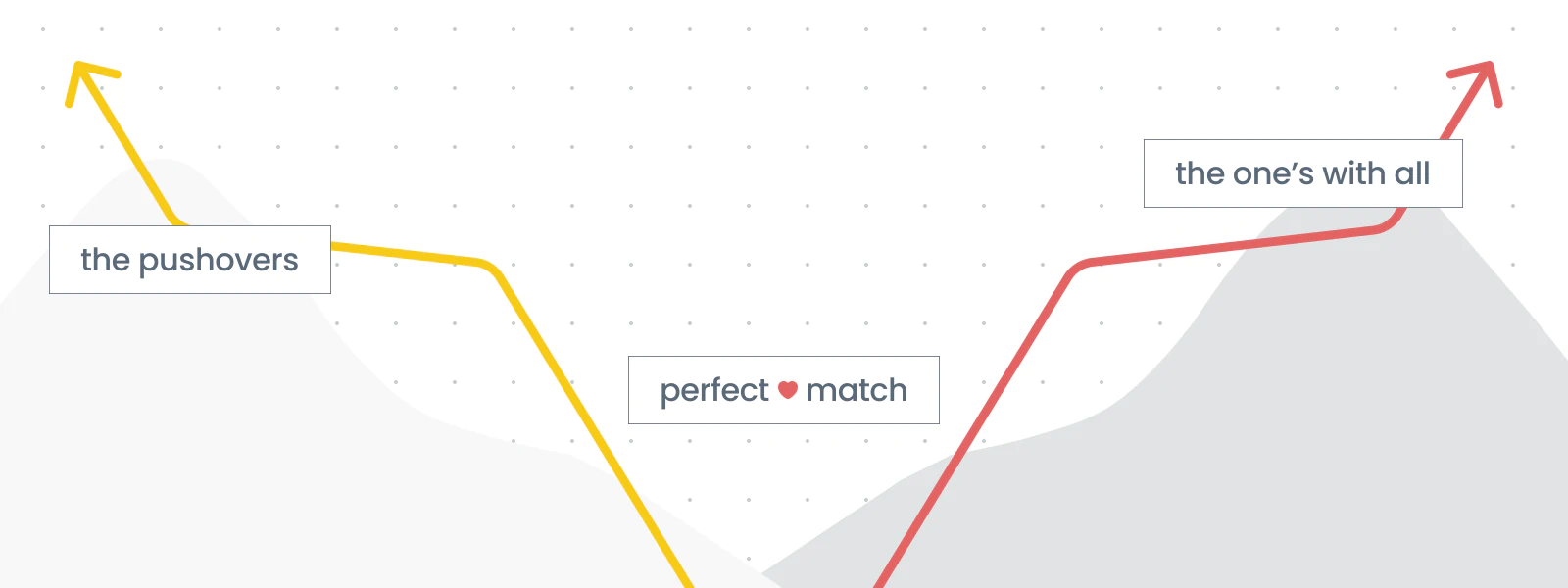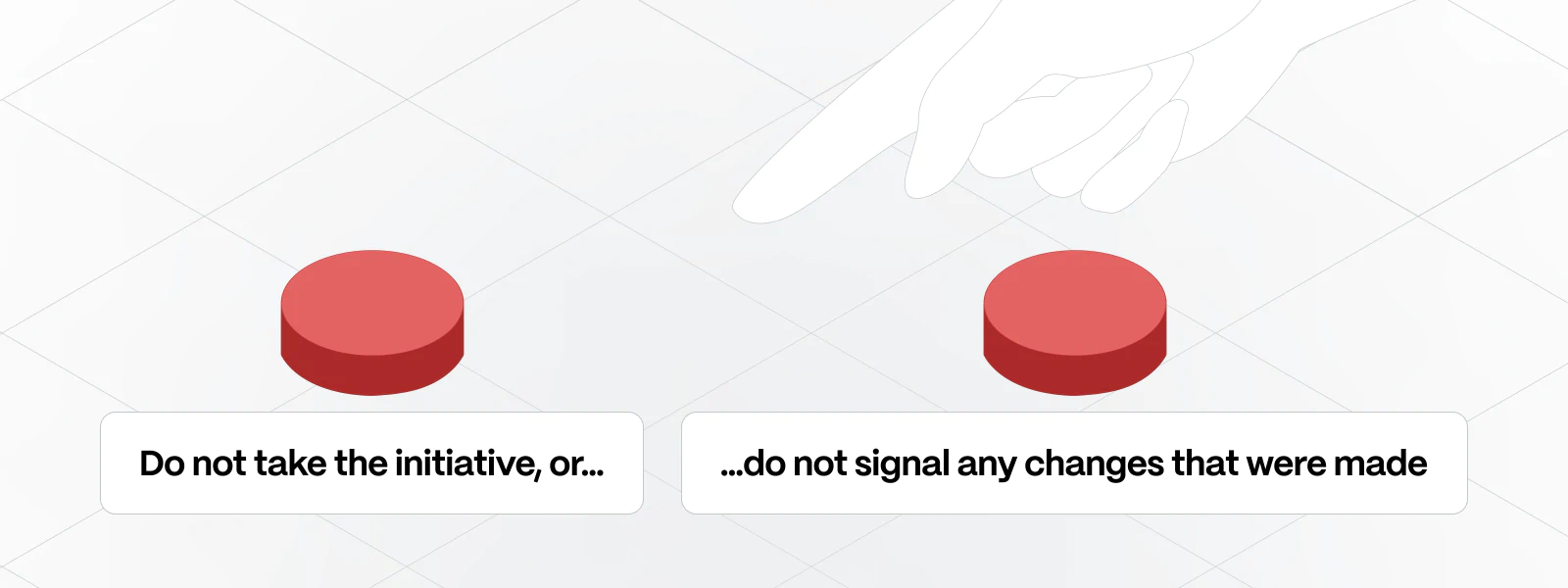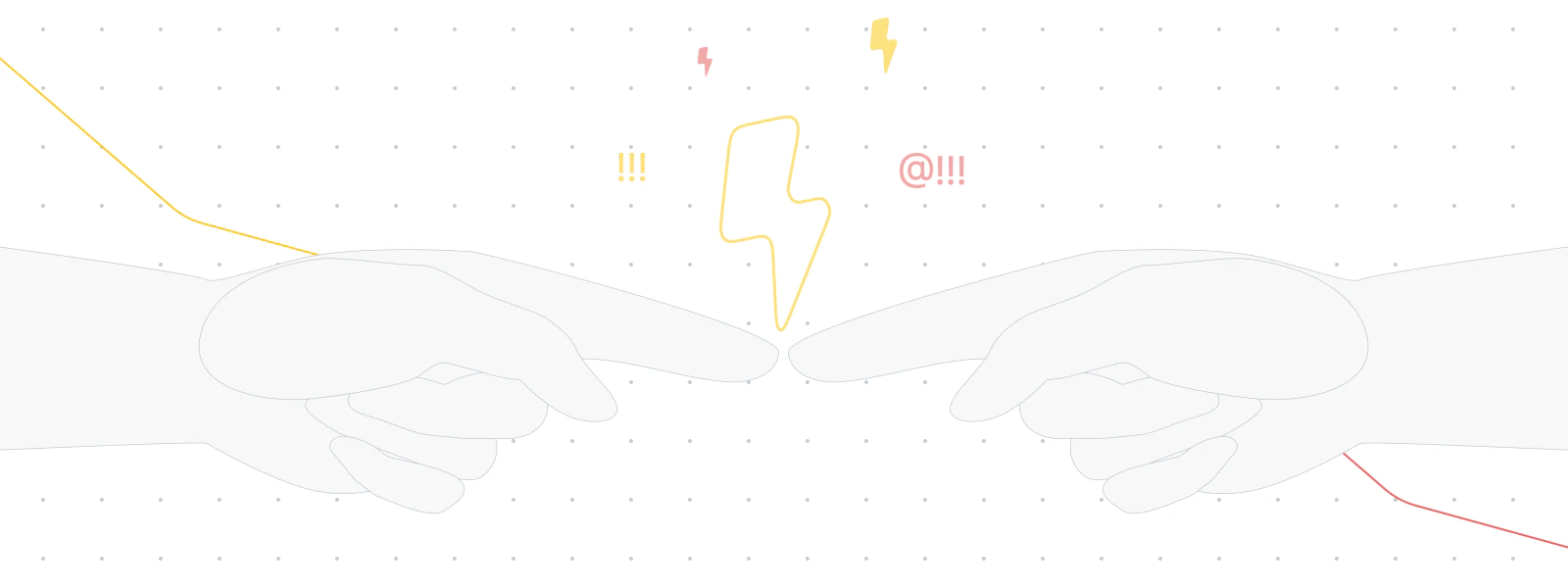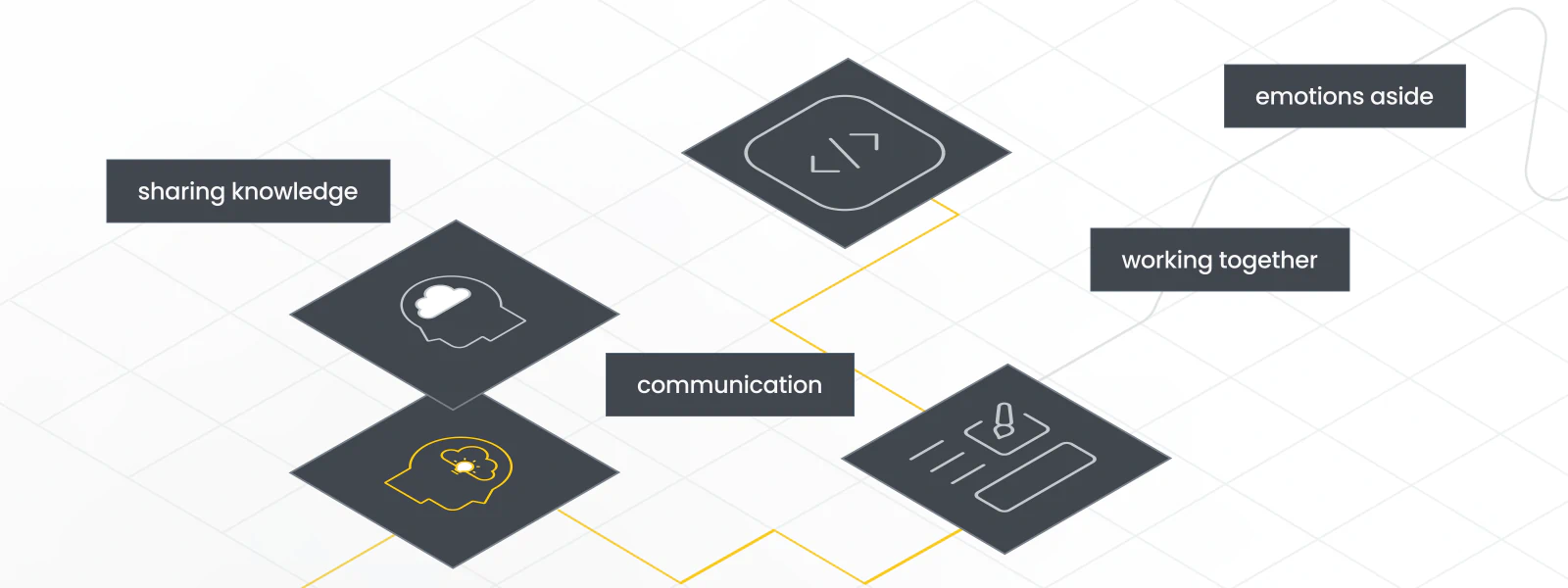Tech
How to Bring Design and Development Worlds Together
Strong products start with stronger teams. Discover how developers and designers can become true allies and drive better outcomes together.

The boundary between design and development is increasingly fluid in software development. But, we still often encounter situations where front-end developers and product designers work in isolation, treating their domains as separate worlds. This article stems from our experiences and observations that the best results come when these worlds unite.
As a team of front-end developers and product designers, we want to share our vision of effective collaboration. We'll show how to break stereotypes and build communication bridges. Through strong communication skills and mutual respect, we’ll unlock new solutions that benefit both employees and the company.
We believe the key to success lies in understanding the other side's perspective and active collaboration from the beginning of the project. Instead of operating in a waterfall model, where design is thrown over the wall to development, we propose an approach based on continuous dialogue, maintaining effective communication, and mutual respect for each party's skills. This results in a smoother workflow and better outcomes.

In our professional lives, we encounter many new people. We change teams, projects, or even companies. Sometimes, the connection with new coworkers is immediate and surprising, while other times, it is a long-term process. To facilitate team communication and increase self-awareness, we would like to start by presenting a vision of some stereotypical front-end developers and product designers and how these types can hinderq a successful project.
This front-end developer believes he's "one with all" and implements as it is most convenient for him. He signals changes (if at all) only after the work is done, and does not discuss his mystical directives.
Implements exactly as it is on design, without challenging solutions, even if those would lead to more optimal approaches.

This product designer does not consider the developer’s opinion, treats their design as the final version of appearance and functionality, and is not open to discussion or changes.
One such stereotype is "The Visionary Autocrat," in which designers adopt a dictatorial approach, dismissing external feedback and undervaluing developers' input. This mindset can lead to a lack of collaboration and create barriers in the development process. Designers often believe their vision is the only correct one, failing to recognize the value of diverse perspectives. This rigidity can result in designs that are impractical or difficult to implement, as technical limitations are overlooked, and developers' expertise is not used effectively.
A product designer who avoids conflict situations during collaboration, relies on the developer's suggestions without having arguments, characterized by a lack of initiative.
On the opposite end of the spectrum, we encounter "The Pushover". This designer avoids conflict during collaboration, relies heavily on developers' suggestions without argument, and is characterized by a lack of initiative. This approach can lead to a passive role in the design process, where the designer’s input is minimal and often dictated by others.
This approach can hinder the design process, as it may result in uninspired or unoriginal solutions. While avoiding conflict is important, a lack of initiative can prevent the designer from fully contributing to the project’s success.
When front-end developers and designers work together, they form a perfect match. Developers who code like artists, combining strong communication skills with technical expertise, paired with designers who balance aesthetics and functionality, create innovative solutions. Together, they solve problems and ensure the product is both functional and beautiful.
Building strong relationships and maintaining effective communication is key to successful team collaboration. Through soft skills training, critical thinking, and active engagement, both parties can contribute to the product’s success and drive employee engagement and morale.

We had some interesting conversations with our colleagues about their experiences working as designers and front-end developers. These conversations revealed a few recurring patterns.

Let’s break down our Team Front collaboration principles into four key aspects that keep us on track and strengthen our teamwork.
We each contribute our expertise, sharing what we do best. We openly discuss our experiences and ideas because we know this approach can help us build an even better product. The more we share, the more we grow, and ultimately, the better the outcome of our work.
From the start, we set clear expectations for how we’ll communicate and collaborate. There are no guessing games here. We know what works for us, so we make sure to signal it. This helps us avoid misunderstandings and lets us focus on the actual collaboration.

Assembly line work processes --- design first, then code --- are long gone. We start talking and collaborating from the very first screen. The designer understands the technical possibilities, and the developer grasps the design vision. This collaboration helps us create better solutions and saves time later by avoiding unnecessary revisions. We make major design decisions together with the frontend team and don’t decide independently.
In discussions, the quality of the argument matters, not egos. We critique ideas, not people. This approach lets us have honest conversations about the project without fear of offending anyone.
Effective communication is the backbone of any successful collaboration between designers and developers. By breaking away from stereotypical roles like "The Yogi," "The Literalist," "The Visionary Autocrat," and "The Pushover," teams can create a more unified and productive workflow. When front-end developers code like artists and designers balance aesthetics with functionality, they form a perfect match that drives innovation.
Our experience revealed common pain points from both perspectives. Developers feel their feedback is taken as personal criticism, while designers experience reluctance to communicate and disregard for established guidelines. Addressing these challenges requires implementing Team Front collaboration principles.
First, knowledge sharing builds stronger products, whether it's discussing UI libraries or explaining UX methodologies. Clear communication guidelines prevent misunderstandings, from establishing primary channels to aligning on MVP goals. The most successful teams involve both designers and developers from the beginning, abandoning the outdated assembly line approach in favor of collaborative decision-making that keeps Figma designs and applications in sync.
Perhaps most importantly, teams must focus on substance over ego, critiquing ideas rather than people. By setting boundaries early, identifying preferred communication styles, and maintaining perspective on shared goals, teams can navigate potential conflicts while driving employee engagement and retention.
When designers and developers come together through continuous dialogue, mutual respect, and active collaboration from the project's start, they find innovative solutions that benefit both the team and the company, resulting in a smoother workflow and better outcomes for all involved.
Partner with world-class experts who understand your challenges, deliver seamless solutions, and support you every step of the way.